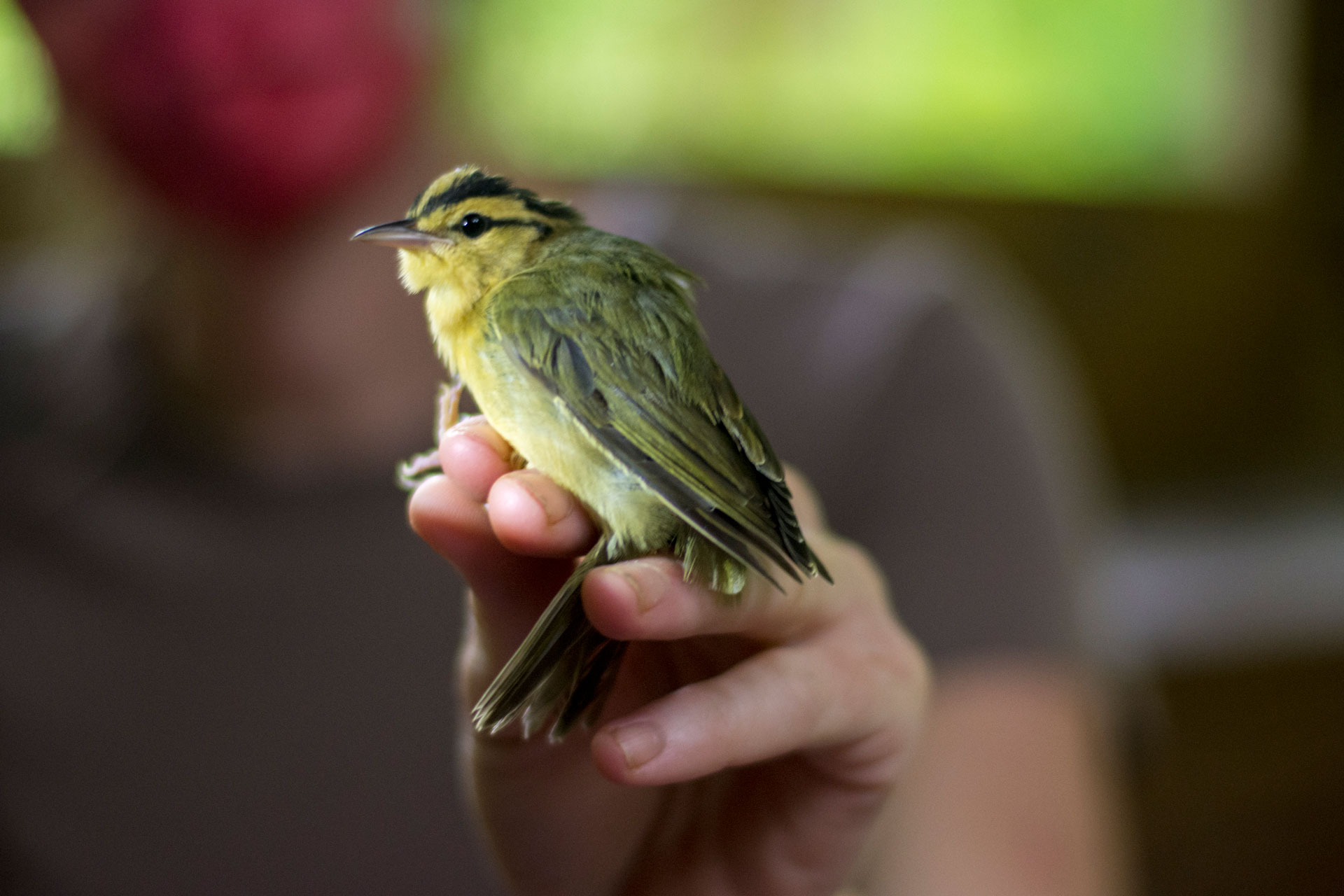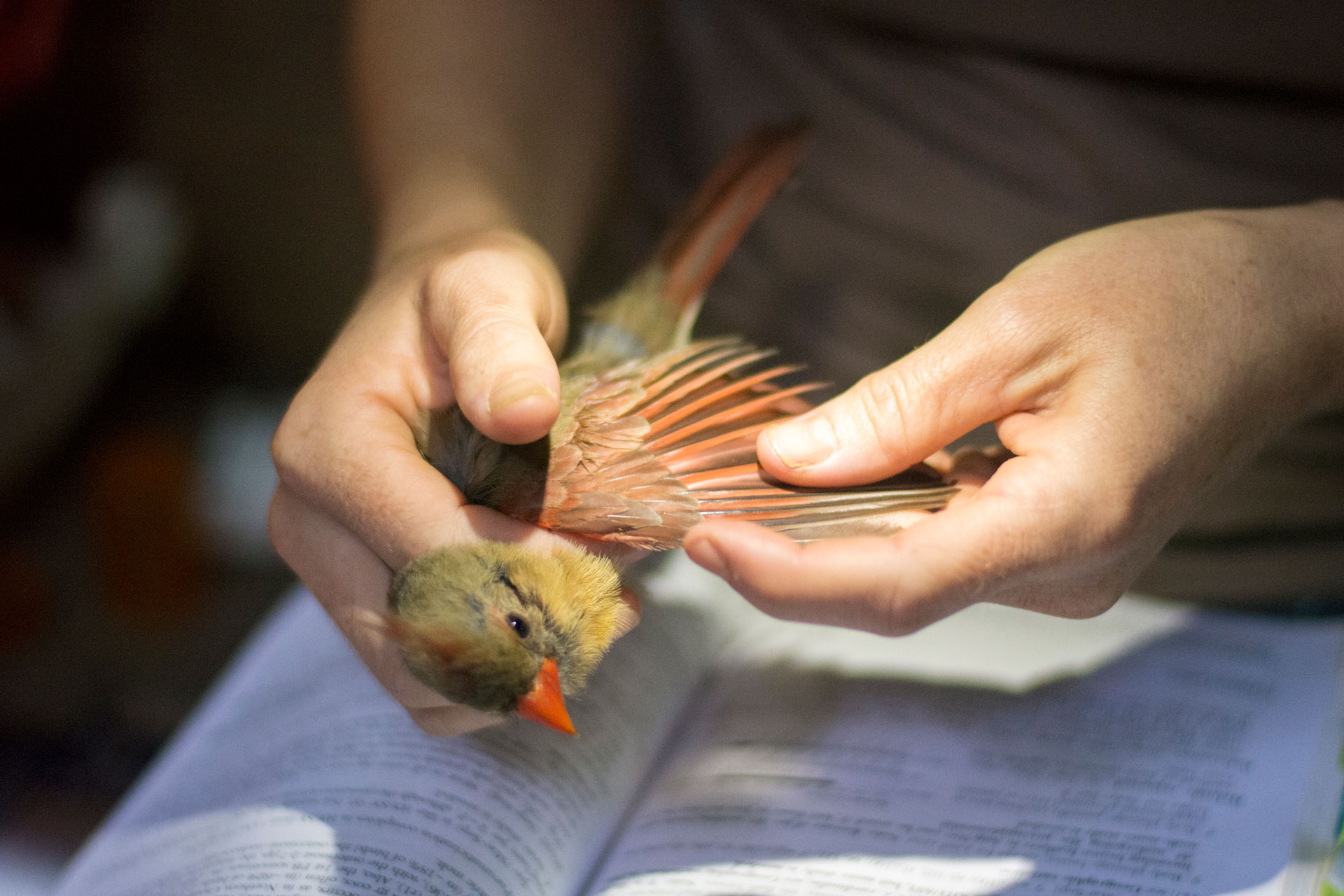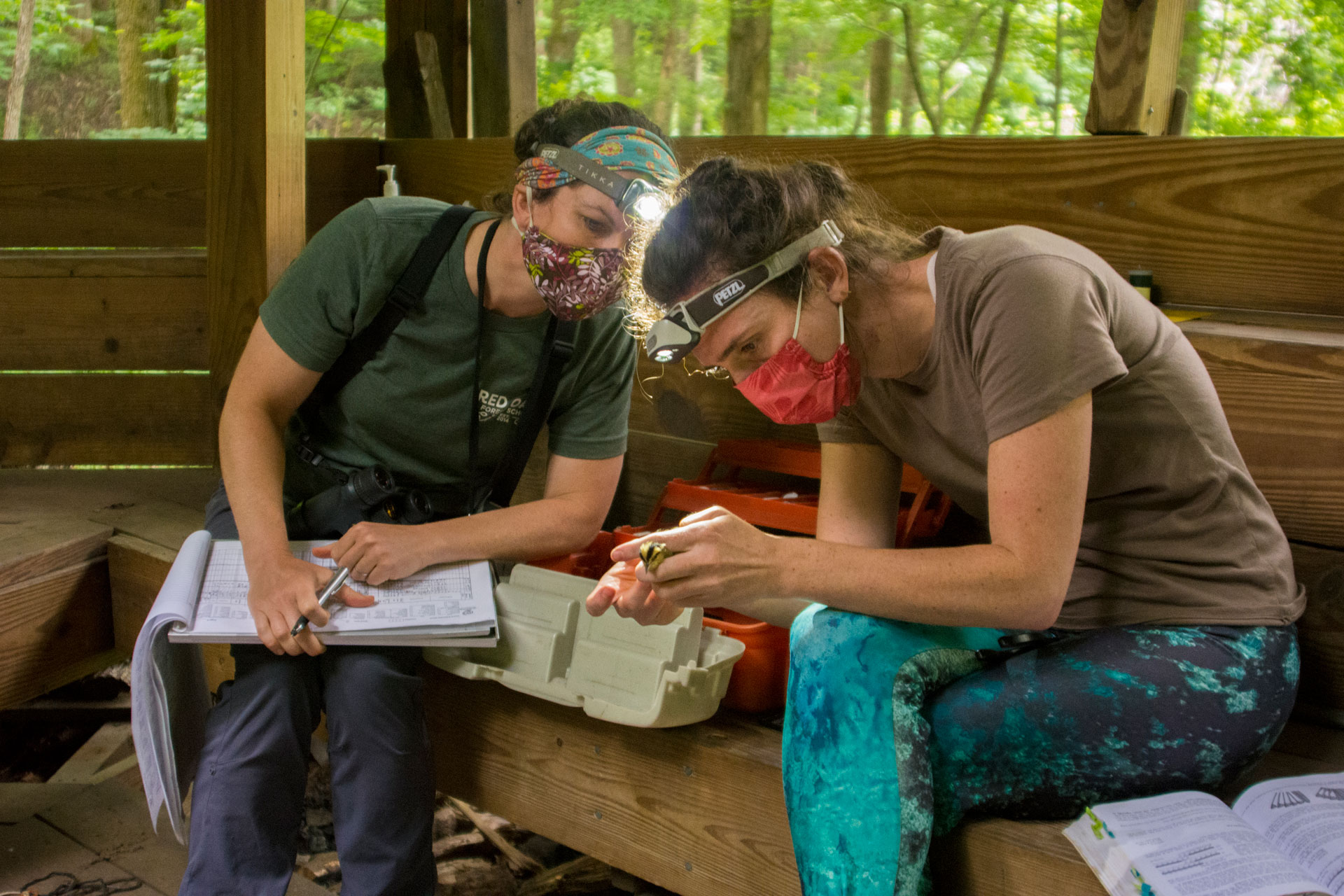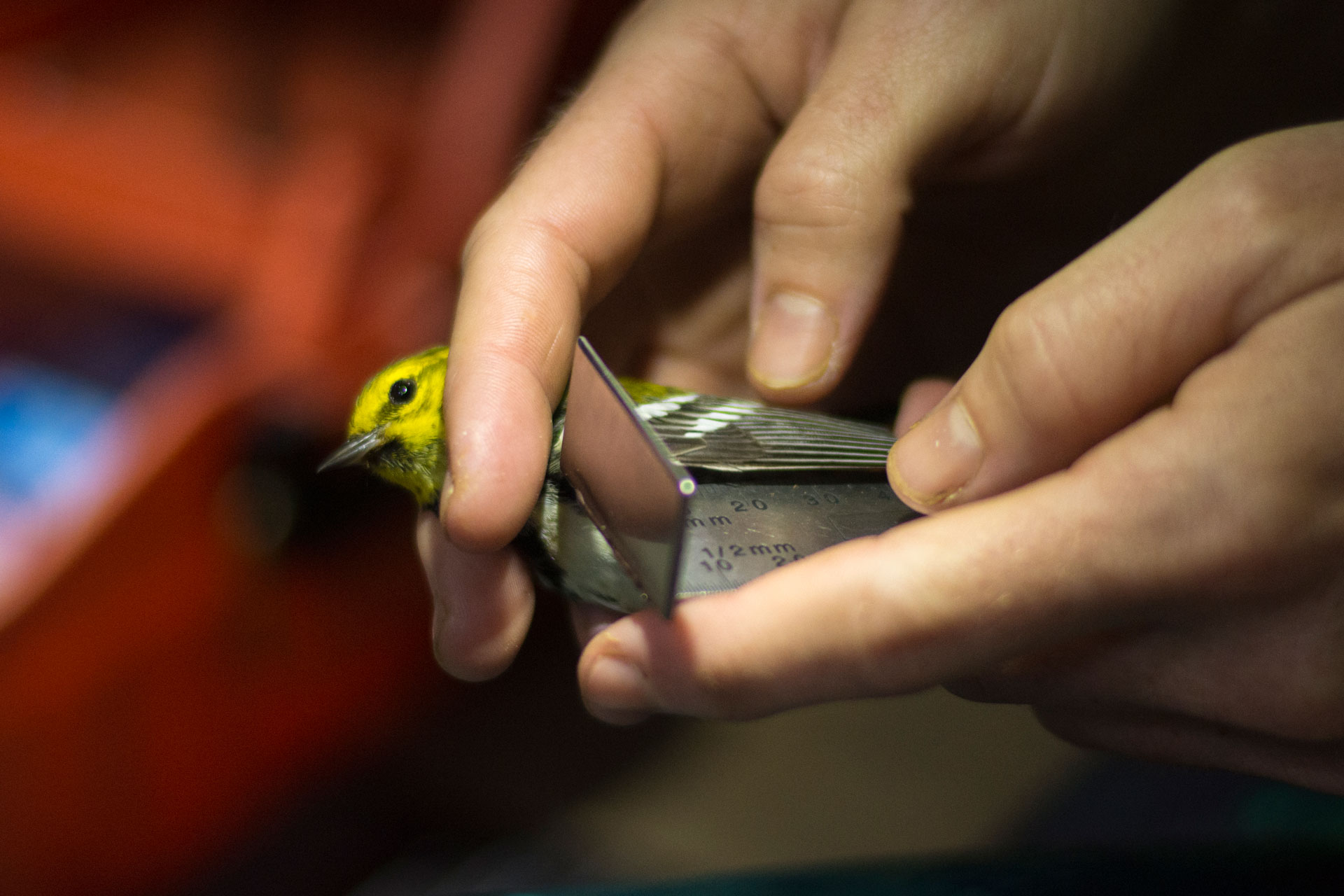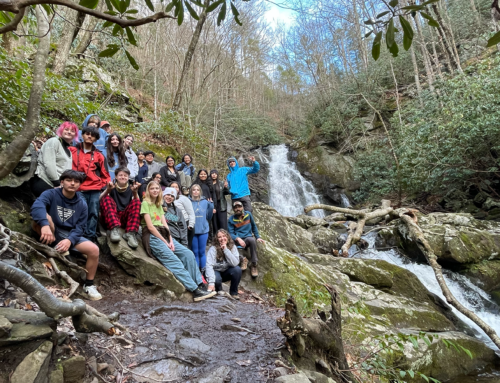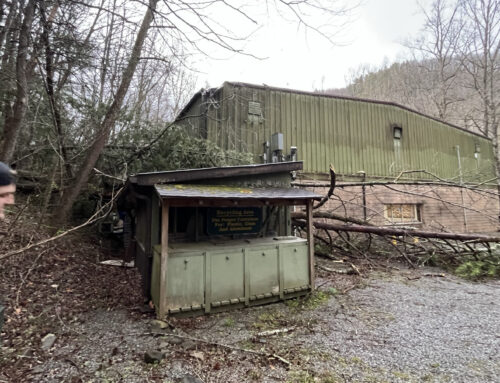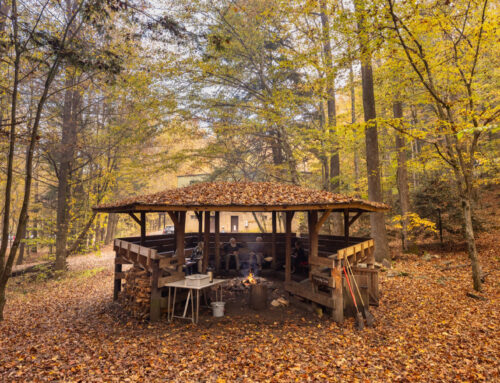While humans may not be traveling much this year, our feathered friends continue their lives and migrations, including our very own summertime neighbors here at Tremont.
With updated safety measures, our core team of banding volunteers completed our 18th year of participating in a national program called MAPS—Monitoring Avian Productivity and Survivorship.
What is MAPS?
MAPS is a protocol for bird banding, an avian research method which requires catching birds in mist nets, carefully removing them, placing a small metal band on their legs, and taking specific measurements and data on each individual bird. This information includes age, sex, species, weight, wing length and whether or not the individual is nesting. Every band has a unique number, which no other bird in the world will have. That way, if they are caught again—either here at Tremont next year or even in Latin America where they overwinter—researchers can learn more about their movements, survival, and the land each species depends on.
Over time, the information from banding can help us understand trends in individual survival and overall population health more precisely. This data can then be used to inform conservation policy as efforts can be focused on areas of known importance for birds.

Pictured above, a female red-eyed vireo poses for the camera before safely flying away. We knew she was a female because she had lost all the feathers on her belly, which mothers do to better share their body heat with their eggs and babies!
2020 Season Highlights
This year we captured a total of 97 birds. What this really means is that we extracted birds from our nets 97 times; some of them were banded for the first time (Figure 1), and others were caught again after being banded this year or previous years or flew away before being processed (Figure 2).
Here are some highlights from our 2020 season:
- In nets made for little songbirds, volunteers Grace and Richard were surprised to walk up to one of Tremont’s largest avian residents: a pileated woodpecker!! With just one foot stuck in the net, she detangled herself and flew off as they approached the Lagoons net.
- In the same area a few weeks later, another volunteer, Sarah, came upon a little screech owl who had swooped into the net! The little owl also flew off before Sarah reached the net.
- We recaptured a Louisiana Waterthrush named Obi Wan, who was first banded by Tiffany Beachy in 2017 as a second year bird. This means Obi Wan was born in 2016, and has successfully completed a migration to Central America or the West Indies for the winter—and then back to our valley—four times!!
- We banded 14 species of birds and had a total of 20 species visit our nets.
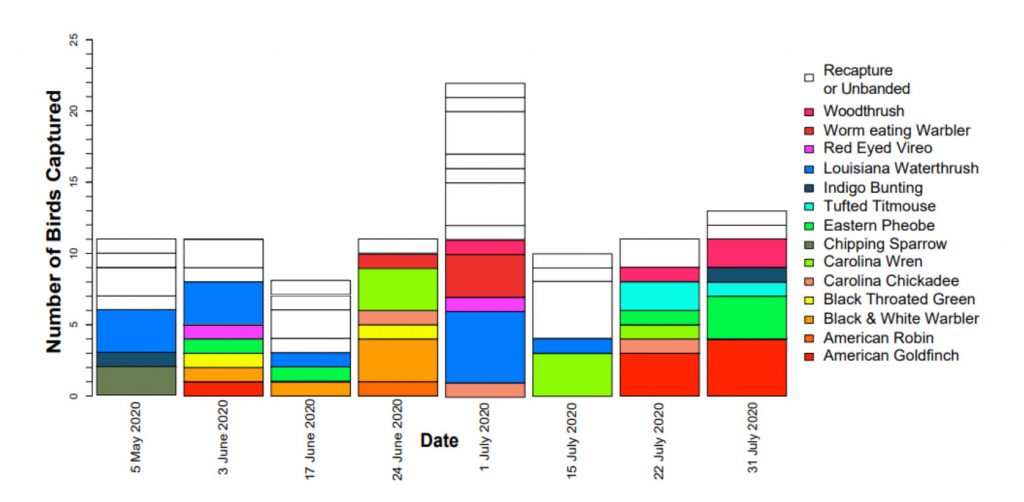 Figure 1. All birds captured during our 2020 banding season. Newly banded birds are indicated with colors. Unbanded and recaptured birds are in white (see Figure 2 for details). Total number of newly banded birds for the season was 62.
Figure 1. All birds captured during our 2020 banding season. Newly banded birds are indicated with colors. Unbanded and recaptured birds are in white (see Figure 2 for details). Total number of newly banded birds for the season was 62.

Figure 2. All unbanded or recaptured birds during the 2020 banding season. A “Recapture” is a bird that is caught that has previously been banded, either this year or a previous year. An “Unbanded” bird is a bird that either flew away before banding, is too large for our bands, or banding would put the bird at risk in some way. Total Unbanded/Recaptured birds was 35.
Connecting People and Nature
We had a great season for data collection and continuing to monitor our valley. However, this year just wasn’t the same without the ability to share the curiosity, awe, and inspiration we feel from getting up close with our feathered friends with the public. We can’t wait until we can safely share these experiences with you all again.
Until then don’t forget to listen closely, look up more often, and hear what our feathered neighbors have to share. They have so much to teach us!
Erin
Manager of Science Literacy and Research
Enormous thanks to the people who made it happen: Paul Super, Mark Armstrong, The Metcalf Family (Karen, Daniel, Sarah, Hannah, Timothy), Gar Secrist, Richard Secrist, Grace Bobo, Holly Hoyle, The Dattilo Family (Clare, Oliver, Fern, Anabel), the DLIA team (Will, Julie, Garrett, Alex, Leah), NPS interns (Kayleigh, Kelly, Crystal)


